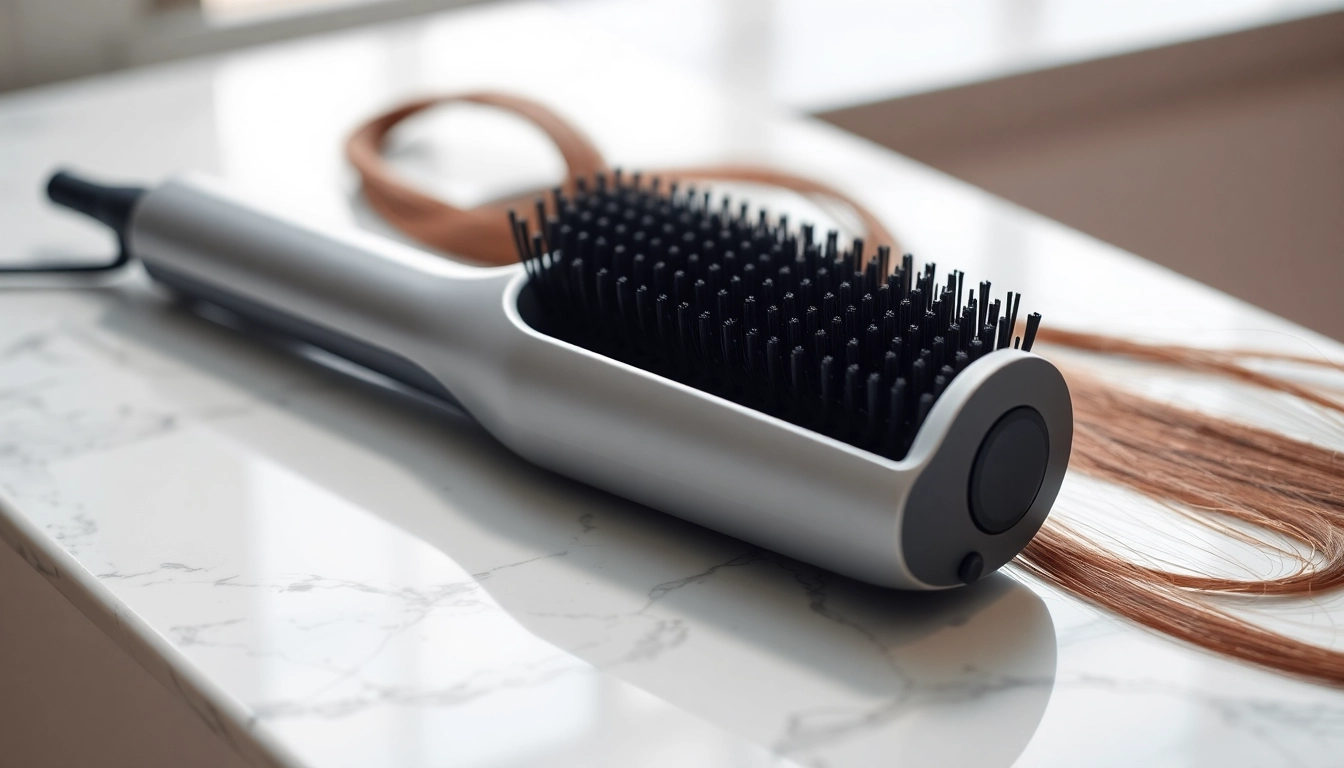Understanding Heat Tools for Hair
What Are Heat Tools for Hair?
Heat tools for hair are specialized devices designed to alter the structure of hair through the application of heat. These tools, which include hair dryers, flat irons, curling wands, and hot air stylers, are essential in many styling routines, allowing individuals to achieve various looks, from sleek and straight to bouncy and curly. These devices can significantly enhance your styling options, but they require an understanding of proper usage to safeguard hair health.
Types of Heat Tools: A Comprehensive Overview
When exploring heat tools for hair, it’s important to understand the different types available. Each tool serves a unique function:
- Hair Dryers: Essential for drying hair quickly, with options ranging from compact travel models to professional-grade dryers.
- Curling Irons: Used to create curls and waves, these tools come in various barrel sizes to produce different curl styles.
- Flat Irons: Ideal for straightening hair, these tools work by clamping down on hair strands and applying heat to remove curls and frizz.
- Hot Air Brushes: Combining the functions of a hair dryer and a styling brush, these tools add volume and shape while drying hair.
How Heat Affects Your Hair Health
The application of heat to hair can alter its structural integrity. Hair is composed of keratin, and excessive heat can cause the outer layer of the hair shaft, known as the cuticle, to become damaged. This can lead to dryness, split ends, and breakage. Understanding how to use heat tools properly is vital for maintaining healthy hair.
Choosing the Right Heat Tool for Your Hair Type
Identifying Your Hair Type
Before selecting a heat tool, it’s crucial to identify your hair type, as different hair textures respond differently to heat. Hair can be broadly categorized into three types: straight, wavy, and curly. Additionally, considering thickness (fine, medium, or thick) is important, as fine hair may require less heat compared to thick hair, which can hold styles better under higher temperatures. Understanding your hair’s characteristics will guide you in choosing the right tool.
Recommended Heat Tools for Different Hair Types
Choosing the right heat tool not only enhances styling results but also minimizes potential damage:
- Fine Hair: Use low-temperature settings and opt for tools like a ceramic flat iron that distributes heat evenly.
- Medium Hair: Versatile options, such as a blow dryer with adjustable heat settings, can work effectively.
- Thick Hair: Look for high-heat tools, like a titanium curling iron, which can handle the density and texture of thick hair.
Common Misconceptions About Heat Tools
Several myths surround the usage of heat tools, which can lead to improper practices. A few common misconceptions include:
- All heat tools are damaging: When used correctly with the right temperature settings and protection, they can be safe.
- Higher heat equates to better styling: Using the lowest effective temperature significantly reduces damage.
- Heat tools are unnecessary for short hair: Shorter styles can also benefit from the versatility of heat tools.
Best Practices for Using Heat Tools Safely
Preparing Your Hair Before Styling
Preparation is key to achieving the best results while minimizing damage. This process begins with:
- Washing your hair with a sulfate-free shampoo and conditioner.
- Patting hair dry with a towel instead of rubbing, which can cause breakage.
- Detangling hair gently with a wide-tooth comb or a brush designed for wet hair.
Heat Protection Products: What to Use
To shield your hair from the damaging effects of heat, using heat protectant sprays or serums is essential. These products create a barrier against heat, helping to lock in moisture, and reduce the likelihood of damage. It’s advisable to apply these protectants on damp hair before using any heat tool for optimal protection.
Tips for Avoiding Heat Damage
To maintain hair health while using heat tools:
- Limit heat styling to a few times a week.
- Use a thermal protectant every time styling with heat tools.
- Keep the temperature on tools moderate; avoid the “high” settings if not necessary.
- Incorporate regular deep conditioning treatments into your routine.
Top Heat Tools for Hair in 2023
Review of Leading Brands
The market for heat tools is vast, with numerous brands offering innovative products. Leading brands include:
- Dyson: Known for their technologically advanced hair dryer that minimizes heat damage.
- GHD: Offers a sleek flat iron, renowned for its ability to provide consistently even heat.
- T3: Known for their diverse tools, including a curling iron that adjusts heat based on hair type.
Comparative Features and Pricing
When comparing heat tools, consider not just the cost but the features that best suit your needs:
| Brand | Type of Tool | Price (approx.) | Key Features |
|---|---|---|---|
| Dyson | Hair Dryer | $400 | Intelligent heat control technology, fast drying |
| GHD | Flat Iron | $250 | Universal voltage and automatic sleep mode for safety |
| T3 | Curling Iron | $250 | Multiple heat settings and digital display |
Customer Feedback and Recommendations
Customer reviews provide insights into the performance and reliability of heat tools. High ratings typically highlight ease of use, effectiveness in styling, and durability. Brands like Dyson receive commendations for their innovative designs, while GHD is praised for its consistent heat performance. Always check current user reviews before purchasing to ensure the tool meets your specific styling needs.
Maintaining Your Heat Tools and Hair Health
Cleaning and Caring for Your Heat Tools
To extend the lifespan of your heat tools, regular maintenance is crucial. This includes cleaning any product buildup or residue:
- Unplug the tool and let it cool completely before cleaning.
- Use a soft cloth or brush to remove hair and products from the plates or barrels.
- A damp cloth may be used for deeper cleaning, ensuring no water gets into electrical components.
Signs of Wear and When to Replace
Recognizing when to replace your heat tools can save you from hair damage. Key signs include:
- Inconsistent heat output.
- Visible cracks or damage to the tool’s surface.
- Frequent overheating or failure to turn on.
Combining Heat Tools with Other Styling Methods
For optimal results, consider integrating heat tools with other styling methods. For example, you can use a heat tool to set your curls and finish off with styling creams for texture and hold. Alternating between heat styling and heat-free techniques, such as braiding damp hair for natural waves, can also maintain hair health while delivering beautiful styles.






